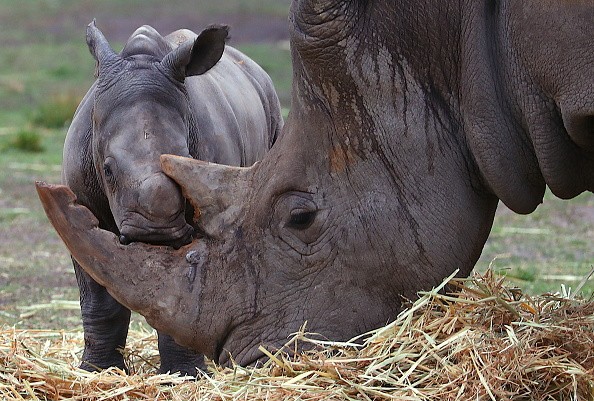Rhinos may look formidable, but their species have declined due to continuous poaching in Nambia and South Africa.
Rhinos, mainly the black rhinos, have dealt with population declines due to threats of illegal trade, poaching, habitat loss and infrastructure development.
The population of rhinos is critically endangered. Without immediate actions and protection efforts, it would lead to sudden extinction.
The economic and political issues in places where Rhinos thrive make it more difficult for conservation efforts. However, there is much optimism and hope that their species can be saved.
The plight of rhinos under threats of poaching

According to the International Rhino Foundation, South Africa is considered for almost the black rhino population.
- The report noted an estimated 15,000 black rhinos: 2,056 black and 12,968 white species.
The International Rhino Foundation added that poaching activities in South Africa showed a dramatic increase. The report said that about 259 rhino poaching activities were recorded in 2022.
In Nambia, the latest BBC news reported that the number of rhino poaching activities in Nambia had the highest record last year.
The report raised concerns over the number of killed rhinos in the latest record, reaching 87.
Being gigantic, rhinos are still targets of illegal activities due to the high demand for their rare horns. It is still an expensive commodity and collection.
According to a BBC report, the Ministry of Environment, Forestry and Tourism explained the concerning state of the rhinos' population. The report said that 26 white rhinos and 61 black were killed.
On the other hand, the World Wildlife Fund (WWF) explained that poaching is considered the deadliest threat to the population of critically endangered rhinos.
The report noted that political instability and abject poverty have resulted in relentless poaching activities threatening the rhinos' population.
WWF said that waves of poaching activities were noted in Kenya, Tanzania, the Zambezi River and Lunagwa Valley.
Did you know? More about Rhinos
According to WWF, the Rhino population (Diceros bicornis) is said to be one of the oldest groups of mammals.
In Nambia, the emergence of rhinos is an essential source of ecotourism.
The report said that rhinos' habitats are forests, woodlands and semi-desert Savannah.
Furthermore, Save The Rhino International explained that the black and white rhinos have the same grey color!
Unlike other animals, Rhinos are considered herbivores. They are also said to be the second largest mammal, next to the elephants.
They are strong animals and love to bond with their herd or group.
With the growing concerns over rhino threats, conservation and protection efforts are crucial to their species' survival.
The cooperation of conservationists, communities, and countries is vital to prevent poaching activities and save them from possible extinction. Stricter conservation zones would be significant.
Related Article : Madagascar Unique Plants, Animals Suffer from Habitat Loss and Climate Change; Researchers Discovered that 23 Million Years of Evolution Needed To Recover
For more similar, don't forget to follow Nature World News.
© 2026 NatureWorldNews.com All rights reserved. Do not reproduce without permission.





